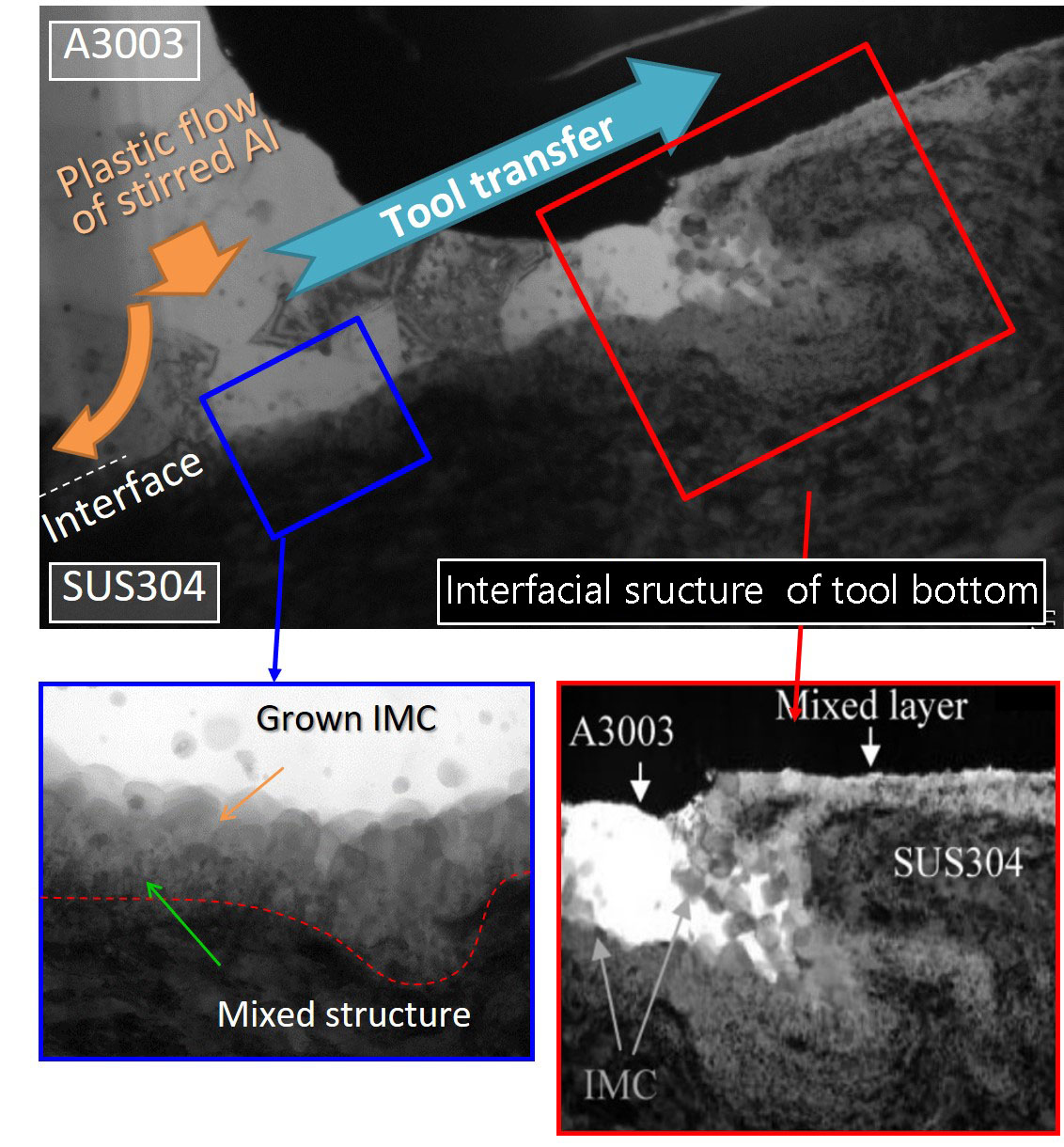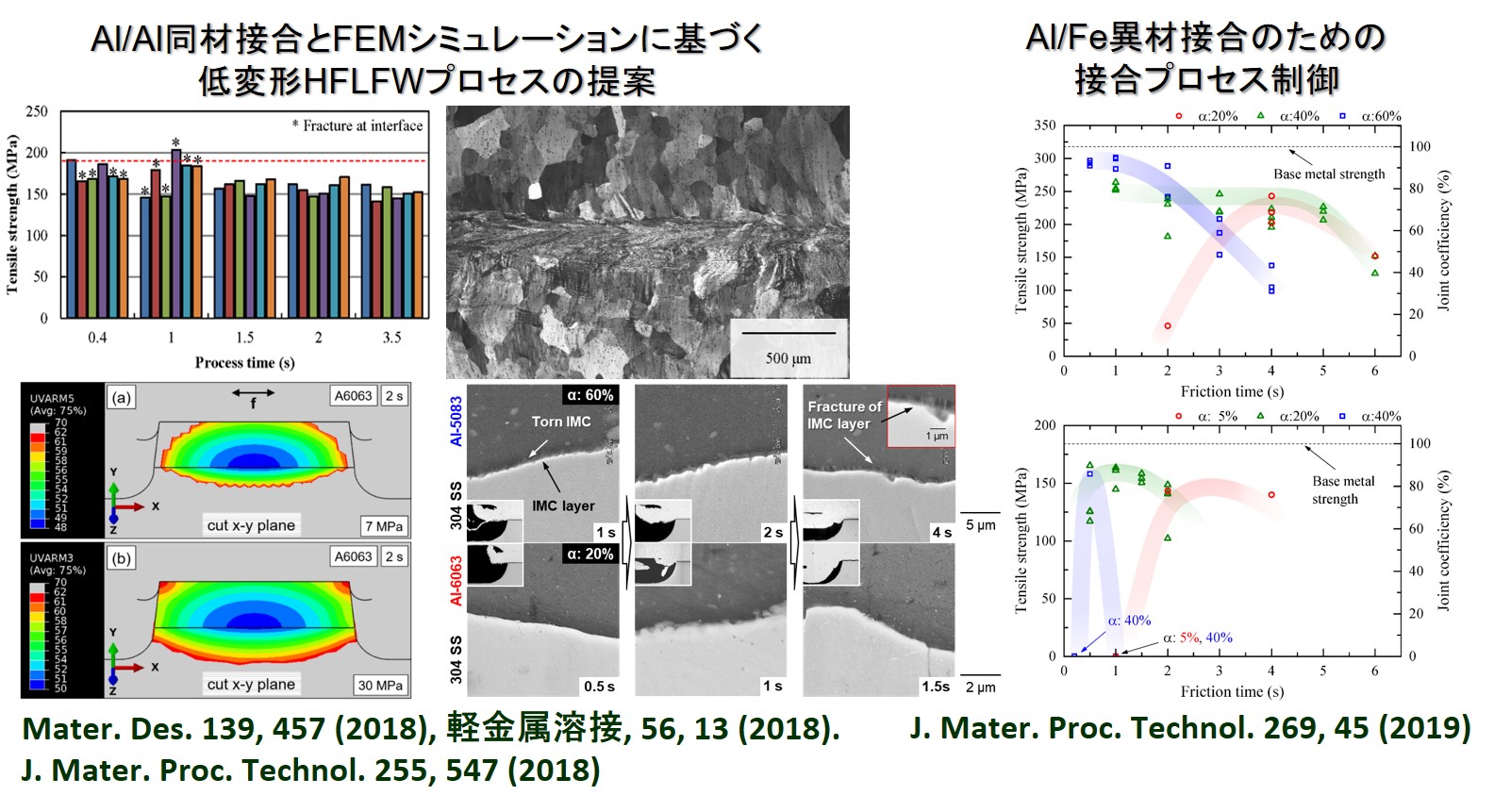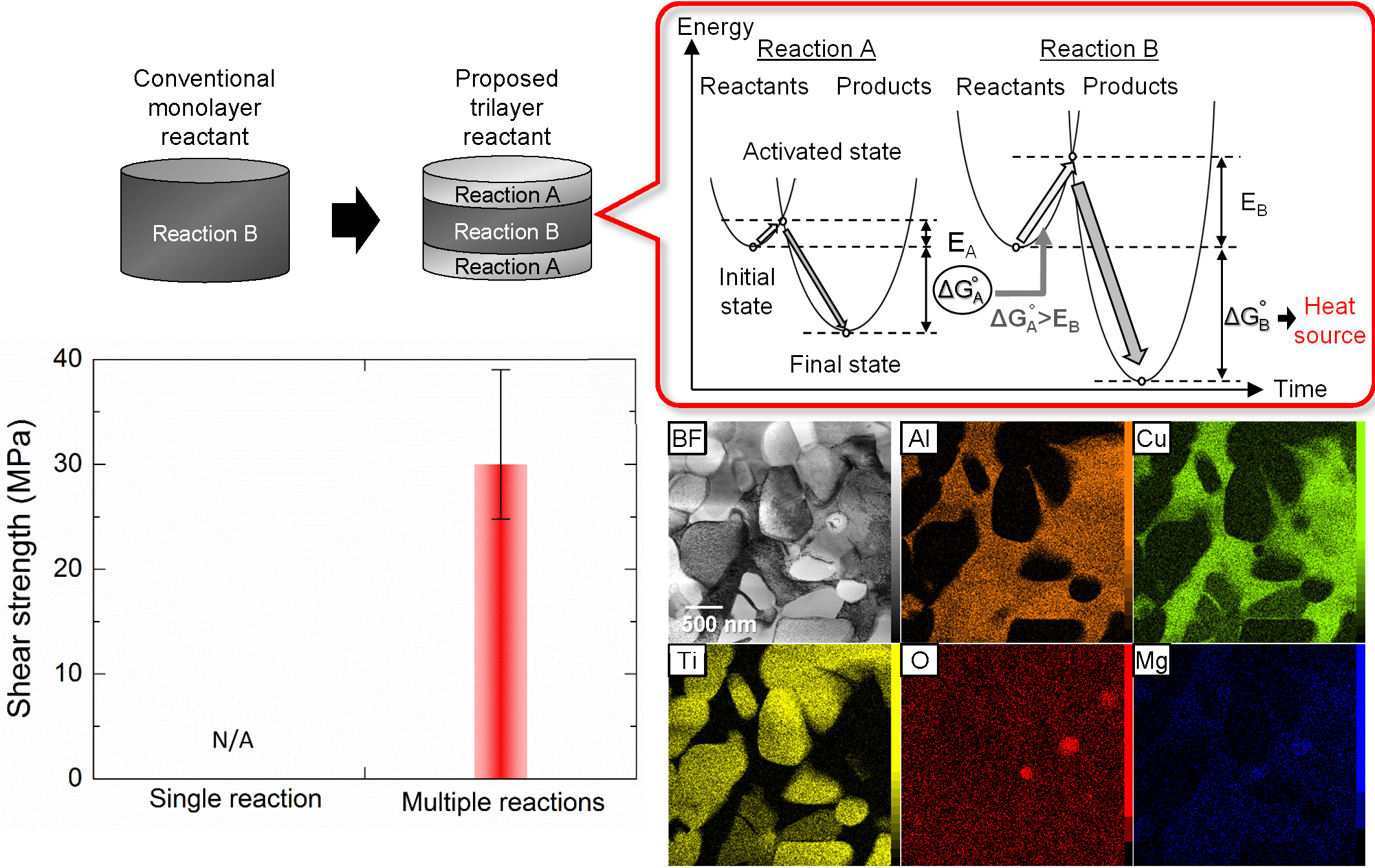Research
Characterization of interfacial joining
Development of multimaterialization technology which ensures the high-performance and the high-reliablity requires the elucidation of the relationship between the microstructure and joint properties baesd on the clarification of joining and fracture mechanisms.
We ingestigate the fundamental principle of both joining and fracture from the viewpoint of metallurgy on the basis of nano- to micro-scale microstructural characterizations.
- Relationship between interfacial structure and joint properties conducted by both the joining process and heat treatment We investigated the relationship between the intermetallic compound (IMC) layer thickness including the deviation and joint strength for the dissimilar joints between aluminum alloys and steel with various strength through the FSW and subsequent two-step heat treatment. We found that the deviation of IMC layer thickness and the mismatch of joiing materials play an important role in determing the joint strength. Papers:Materials Science & Engineering A 735, 361 (2018), Materials Science and Engineering A, 786, 139437 (2020).
- Elucidation of formation mechanism of joint interface We investigate the formation mechanism of the joint interface using transmission electron microscopy which enables the observation of interfacial structure and lattice defects in the joint. We have elucidated the formation mechanism of the joint for various joining process such as friction stir welding, diffusion bonding, and resistance spot welding. Papers:Science Technology of Welding and Joining 19, 609 (2014), Science Technology of Welding and Joining 18, 108 (2013), Scripta Materialia 66, 531(2012),Journal of Light Metal Welding 55,56(2017),Journal of Light Metal Welding 53,24(2015).
- Establishment of high frequency linear friction welding We investigated the high frequency linear friction welding (HFLFW) process, which is 5 times higher than conventional LFW, for the joining of aluminum and the dissimilar joining between aluminum and other materials (e.g., steel, copper). Papers:Journal of Materials Processing Technology, 269, 45 (2019), Journal of Materials Processing Technology, 255, 547 (2018), Materials & Design, 139, 457(2018), Journal of Light Metal Welding 56,139(2018).
- Multiple self-exothermic reactions via instantaneous melting of materials by focusing on the activation energy We proposed a study on a bonding concept based on a multiple reaction that combine formation and thermite reactions thereby forgoing the requirement for bonding temperature rise. The researchers aimed at demonstrating the room-temperature bonding of aluminum alloy utilizing multiple reactions without any external heat source. The room-temperature bonding of aluminum alloy with no external heat source and using a multiple reaction comprising of the thermite reaction of aluminum-copper oxide and formation reaction of titanium-boron has been successfully achieved in their study. The research team concluded that the addition of the thermite reaction not only enhances the formation reaction reactivity but also fills the pores that unavoidably form in the conventional process. Therefore, the distribution of products is responsible for the joint strength, revealing the improvement by appropriate reactant design. Papers:Key Scientific Article (Citation in Advances in Engineering), Materials & Design 121, 136(2017), Materials & Design 113, 109 (2017).




 Intelligent Manufacturing Process Area in Processing for Manufacturing
Division of Materials and Manufacturing Science
Graduate School of Engineering, Osaka University
Intelligent Manufacturing Process Area in Processing for Manufacturing
Division of Materials and Manufacturing Science
Graduate School of Engineering, Osaka University